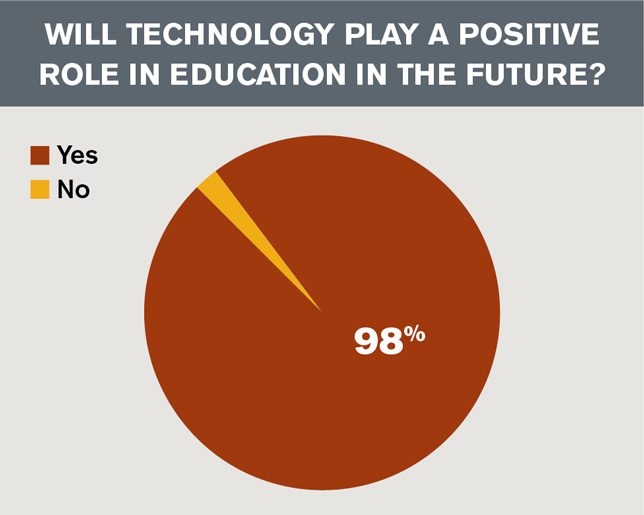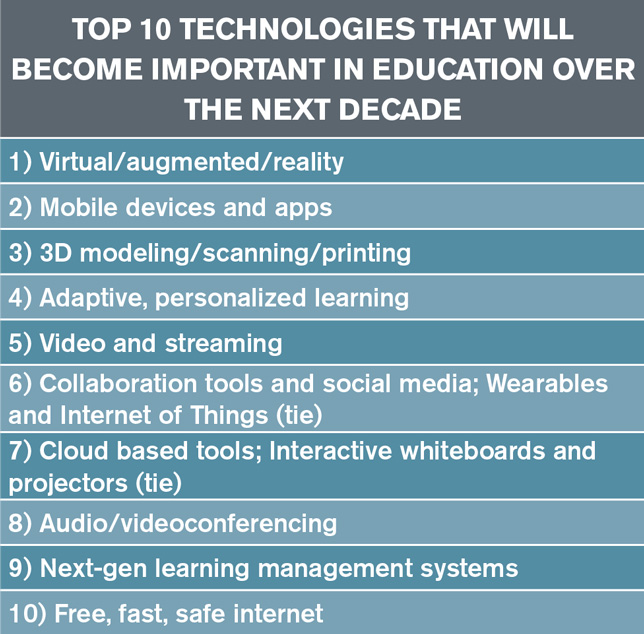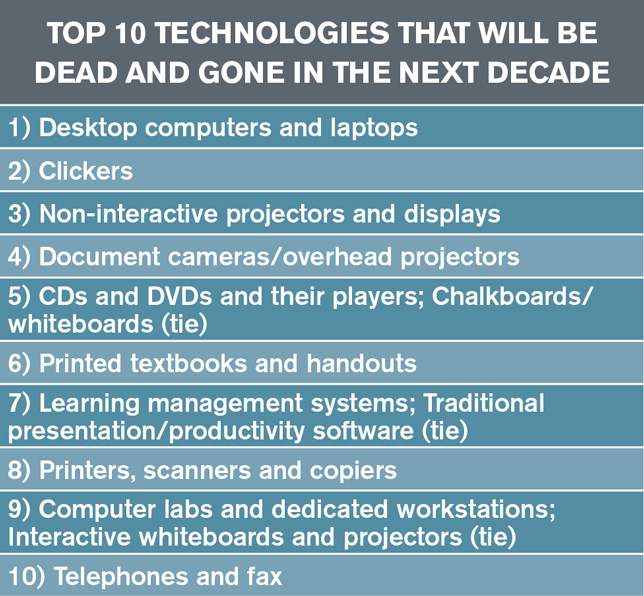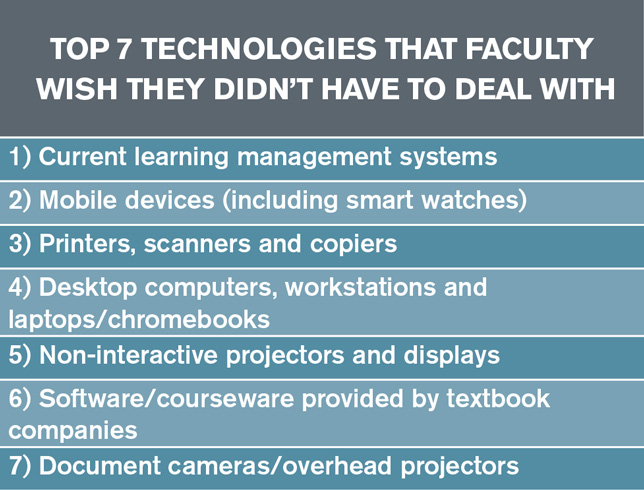Posts Tagged ‘virtual reality’
https://www.edsurge.com/news/2019-12-31-when-education-giants-stumbled-and-data-ruled
The tools that have delivered are specific, targeted solutions that are easy to use and provide teachers and students delight. Simple solutions, like Read 180, which helps accelerate learning for struggling students, still deliver 20 years later, now under Houghton Mifflin Harcourt instead of Scholastic. Accelerated Reader, a product that started more than 30 years ago, still motivates kids to read.
Companies that aim to provide student data in a usable fashion, like Schoology, still provide value.
the promise of data in education is still proving itself. It has taken awhile, but we’re getting to a point where data is more actionable. Renaissance just acquired Schoolzilla, which was launched in 2011, for this reason.
When it comes to devices, many kids today have access to iPads or Chromebooks. Although one-to-one computing hasn’t been as transformational as some predicted in 2010, we’ve certainly seen a huge shift
Most of these [textbook providers] companies tried to re-platform every unique product into one monolithic model, but the promise didn’t pan out—the products proved clunky and hard to use
Predictions that educators would want more assessment data to drive instruction have proven true. https://www.renaissance.com/
The prediction that digital reading would be simple and easy to implement has also proven true.
Virtual reality hasn’t panned out yet.
The rise of gaming in education was another prediction that has largely faded.
started to solve the challenge of data interoperability and portability.
Alongside that, privacy and data responsibility are still a problem
The role of the teacher, however, is still critical. Rather than take over responsibility for educating students, technology’s role should be—and increasingly is—to put multiple options into educators’ hands to easily solve different types of challenges for individual students.
+++++++++++++
more on technology for the last decade
https://blog.stcloudstate.edu/ims/2020/01/02/100-tech-debacles-of-the-decade/
LITA discussions on vendors for VR in academia
At WMU, the Libraries is partnering with our central OIT to host a VR lab in the main library. My partnering co-director, Kevin, is really the subject matter expert but I’m managing a lot of the day-to-day operations. Kevin is programming and experimenting with all kinds of hardware but we decided to use Oculus Rifts in our lab primarily because of the greater durability of the hand controllers (compared especially to the Vive). We’re getting all of our games through the Oculus store and have plans to expand into Steam or another provider but haven’t done so yet. We currently have 40+ titles available for gaming and educational purposes. We also teach content creation using Unity, Maya, Blender, and a handful of other tools.
https://wmich.edu/vr and https://wmich.edu/library/services/vr
Happy to provide more information but hopefully this gives you a good start.
Best wishes,
Scooter
Scott Russell, Director of IT Services
University Libraries, Western Michigan University
+++++++++++++
more on VR in this IMS blog
https://blog.stcloudstate.edu/ims?s=virtual+reality
Kelly, B. R., & 10/11/17. (n.d.). Faculty Predict Virtual/Augmented/Mixed Reality Will Be Key to Ed Tech in 10 Years -. Retrieved October 31, 2018, from https://campustechnology.com/articles/2017/10/11/faculty-predict-virtual-augmented-mixed-reality-will-be-key-to-ed-tech-in-10-years.aspx




Our survey polled 232 faculty members across the country about their use of technology in the classroom, their likes and dislikes, their predictions for the future and more. The majority of respondents (68 percent) come from public institutions, with 28 percent from private nonprofits and 4 percent working at for-profit schools. Seventy-two percent work at four-year colleges or universities; 26 percent are at community colleges (the remaining 2 percent designated their institutional level as “other”).
Respondents represent institutions of a range of sizes, with about one-third (32 percent) working in colleges or universities with 2,500 to 9,999 students. Just under half (45 percent) of respondents are from institutions with 10,000 students or more.
Our respondents are veterans of higher education: The largest group (47 percent) has more than 20 years of experience, with 81 percent logging at least 11 years in the field.
The top three most common school and college types among our respondents are education (22 percent), business/business administration (17 percent) and liberal arts (12 percent). But overall, respondents work in a wide range of disciplines, from engineering and medicine to humanities and fine arts. The top 10 states with the most survey respondents are New York, Texas, California, Florida, Georgia, Virginia, Illinois, Missouri, Pennsylvania and Massachusetts.
++++++++++++++++
More about XR in this IMS blog:
Virtual Reality in the Classroom
https://edex.adobe.com/en/pd/course/2virtualreality18
About this course
Explore the principles of designing virtual reality (VR) content and how to use Adobe creative tools to create impactful VR experiences. Then learn how to apply your new digital skills to integrate VR projects into your curriculum.
Designing VR content encourages students to express their ideas through an engaging and innovative digital format. VR projects can be used effectively in all subject areas, allowing students to improve their communication skills and digital literacy while learning key content objectives.
What will I learn?
- How using virtual reality projects in your curriculum can produce positive outcomes for you and your students
- Best practices and principles for creating amazing virtual reality experiences
- The technical skills to create your own virtual reality with Adobe tools (with support from expert digital media educators)
- How to apply your new skills to integrate virtual reality projects into your curriculum
- Collaborate with educators from around the world
Who is this course for?
This course is aimed at all educators working in primary, secondary or higher education. No prior experience with Adobe tools or digital media technologies is required.
How long is the course?
The course runs for two weeks, starting on 1st October 2018, and should take about 10 hours to complete. All coursework must be submitted by 26th October 2018.
What will it cost?
Enrollment and course completion certificate are FREE!
What software/technology will I need?
What will I receive when the course ends?
After successfully completing this course, you will receive a digital badge and course certificate that states that you have completed 10 hours of professional development.
About Adobe Education Exchange Courses
Each week of an Education Exchange collaborative course includes:
- Design and instructional theory content, innovative and tailored for educators
- Interactive live class session taught by expert educators and featuring guest industry experts
- Hands-on creative assignment with personalized feedback from instructors and other educators
- Reflective learning journal best practice
- Community collaboration and discussion
Live Class Information
This course will include two live classes, which take place on the following days:
- Class 1 on Wednesday October 3rd, 2018
- Class 2 on Wednesday October 10th, 2018
Each class will take place three times; once in each of the following time zones:
- AEST/AEDT (Sydney) from 7pm – 8pm
- BST (London) from 7pm – 8pm
- CDT (Chicago) from 7pm – 8pm
If you can’t make the live classes for whatever reason, don’t worry – all three iterations of each live class will be recorded and available to view here.
Egan, K., Foley, J., Nicholson, K., & Sloane, K. (2018, May 22). The Promise and Pitfalls of AI and VR for Teaching and Learning [Virtual].
eXtended Reality (XR): How AR, VR, and MR Are Extending Learning Opportunities. Educause. Retrieved from
https://events.educause.edu/eli/focus-sessions/2018/extended-reality-xr-how-ar-vr-and-mr-are-extending-learning-opportunities/agenda/the-promise-and-pitfalls-of-ai-and-vr-for-teaching-and-learning
New Book Helps Teachers Unlock Secrets of Virtual and Augmented Reality With Lessons, Apps, and Strategies for the Classroom
New Book Helps Teachers Unlock Secrets of Virtual and Augmented Reality With Lessons, Apps, and Strategies for the Classroom
the International Society for Technology in Education to publish a book, titled Learning Transported: Augmented, Virtual and Mixed Reality for All Classrooms, to offer practical insights, lesson plans, and classroom examples so educators can make the most of these experiential worlds.
Definition
Augmented reality superimposes a digital layer on the world around us, often activated by scanning a trigger image or via GPS (think Pokemon Go!). Virtual reality takes users away from the real world, fully immersing students in a digital experience that replaces reality. Mixed reality takes augmented a step further by allowing the digital and real worlds to interact and the digital components to change based on the user’s environment.
Virtual Shapes
DEVICES: iOS, Android, Chromebook, PC, COURSE: Geometry, GRADES: 2-5, 60 minutes
Storytelling
DEVICES: iOS, Android, COURSE: English Language Arts, Speaking and Listening, GRADES: K-1
Augmented and Virtual Reality with EON
DEVICES: iOS, Android, COURSE: Earth and Space Science, GRADE: 4, 45 minutes
Scavenger Hunting as a Classroom Activity
The app offers teachers a unique way to create a scavenger hunt by designing AR messages and leaving them in specific places for students to “discover.”
Waypoint App
The Waypoint App also allows for creation of educational scavenger hunts using augmented reality. Educators can easily add questions that address lesson objectives, set specific locations where the questions are hidden, and then have students hunt for questions by following the map. The hunt is easily shared with students on a variety of platforms, including text messaging and email.
Breakout EDU
Breakout EDU has become a popular game in education. Driven by creativity, teamwork, and problem-solving, the game provides a fun learning experience as it challenges students to compete in solving puzzles. The game centers on a series of questions; each solved question unlocks the next part of the activity. Students work in groups, competing against other groups to open all the locks first.
University of Waterloo to have first virtual reality optometry lab in Canada
FRIDAY, SEPTEMBER 28, 2018 https://uwaterloo.ca/news/news/university-waterloo-have-first-virtual-reality-optometry-lab
A new virtual reality (VR) training lab at the University of Waterloo’s School of Optometry and Vision Science, will help Canada’s next generation of optometrists learn how to diagnose vision problems and eye diseases more quickly and accurately.
The new lab, funded through an $800,000 investment by national eye care provider FYidoctors, At a total cost of $1.5 million, the FYidoctors Simulation Lab is the first of its kind in Canada and will ensure the School remains at the forefront in optometric education in North America.
Dr. Al Ulsifer, CEO and Chairman of FYidoctors and Waterloo alumnus, said that this investment isn’t just an investment in the University, but a stake in the future generation of optometrists.
The Equipment:
The lab will initially include 5 Eyesi® Binocular Indirect Ophthalmoscopes (BIO) are state of the art augmented reality simulator for training of retinal examinations and provides a highly realistic and dynamic 3D simulation of the anatomical structures of the eye and ophthalmoscope optics.
For more detailed information visit: https://www.vrmagic.com/simulators/feature-pages/indirect/
Phase two of the lab, to be unveiled at a later date, will include the addition of the Eyesi® Slit Lamp simulators. This technology will allow students to practice basic handling of the device and skills required to conduct a corneal exam, retinal exam and Gonioscopy & Tonometry.
++++++++++++
more on AR Augmented Reality in this IMS blog
https://blog.stcloudstate.edu/ims?s=augmented+reality
How AR and VR Can Make Students Laugh and Cry Out Loud—and Embed Them in Their Learning
https://www.edsurge.com/news/2018-08-28-how-ar-and-vr-can-make-students-laugh-and-cry-out-loud-and-embed-them-in-their-learning
40 virtual reality headsets with haptic handsets for them to manipulate in the VR/AR space, and I connected them to content from New York Times VR and WITHIN. The content placed students in settings such as on the ground in a refugee crisis or in the midst of the Millions March in New York City.
At the beginning of every class, they would go into this virtual space and engage with the content instead of just reading it. They’d respond to me about what it was like to be immersed in the experience.
The content from the WITHIN app provided one of the more visceral experiences for students.
At the end of the course, for example, students met with a shark tank-type group—investors from the community, business, and industry folks—and pitched them business ideas that would utilize VR to provide a solution to problems that were local, regional, national or even global in scope.
Were you able to measure this success?
The way that I measured it was completion. How many of my students actually got through my class successfully? It was over 85%. My research from the two classes where I used VR and this approach shows students were engaged, and ultimately more successful in my classes.
zSpace https://info.zspace.com/2018-vived-allied-health-promo
Also:
Intro To Haptic Technology
Haptics provide a critical role in making our devices more interactive.
https://www.iotforall.com/intro-to-haptic-technology-tachammer-haptic-actuator/
1. Eccentric Rotating Mass (ERM)
2. Linear Resonant Actuator (LRA)
Apple Taptic Engine
3. Piezoelectric Actuators
4. Forced Impact (Accelerated Ram)
+++++++++++
more on VR in this IMS blog
https://blog.stcloudstate.edu/ims?s=virtual+reality
Arizona State online biology students getting hands-on experience in virtual labs
James Paterson, Aug. 28, 2018
https://www.educationdive.com/news/arizona-state-online-biology-students-getting-hands-on-experience-in-virtua/531039/
- Thirty students registered for Arizona State University Online’s general biology course are using ASU-supplied virtual reality (VR) headsets for a variety of required lab exercises
- The VR equipment, which costs ASU $399 per student, allows learners to complete lab assignments in virtual space using goggles and a controller to maneuver around a simulated lab. Content for the online course was developed and assessed by ASU biology professors and was evaluated this summer. Students also can use their own VR headsets and access the content on their laptops, as 370 other students are doing.
- A university official told Campus Technology the initiative will help online students have the experiences provided in brick-and-mortar labs as well as new ones that were impossible previously. The effort also will ease a problem on campus with limited lab space.
Similar labs are planned for the University of Texas at San Antonio and McMaster University in Canada, according to a blog post from Google, which partnered with the ed-tech company Labster to create the virtual labs. In addition, virtual labs also are available at eight community colleges in California, offering IT and cybersecurity skills instruction.
About half of colleges have space dedicated to VR, with adoption expected to increase as technology costs go down, according to a recent survey by nonprofit consortium Internet2. The survey found that 18% of institutions have “fully deployed” VR and are increasingly making it available to online students, while half are testing or have not yet deployed the technology.
Colleges are using VR for a variety of purposes, from classroom instruction to admissions recruiting to career training.
In addition, because the use of VR is growing in K–12 education, students will expect to use it in college.
+++++++++
more on virtual reality in education in this IMS blog
https://blog.stcloudstate.edu/ims?s=virtual+reality+education
take a look at OUR VR lab tour:
https://poly.google.com/u/0/view/epydAlXlJSw



